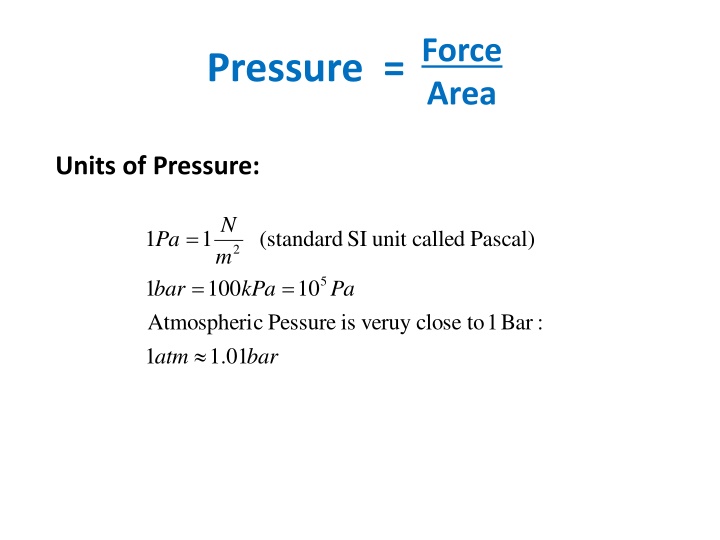
Pressure, Force, and Fluids - Physics Concepts Explained
Explore the principles of pressure, force, and hydrostatic pressure in fluids through practical examples and physics problems. Learn about Pascal's Law, pressure calculations, and intriguing experiments involving pressure differentials in this informative content.
Download Presentation

Please find below an Image/Link to download the presentation.
The content on the website is provided AS IS for your information and personal use only. It may not be sold, licensed, or shared on other websites without obtaining consent from the author. If you encounter any issues during the download, it is possible that the publisher has removed the file from their server.
You are allowed to download the files provided on this website for personal or commercial use, subject to the condition that they are used lawfully. All files are the property of their respective owners.
The content on the website is provided AS IS for your information and personal use only. It may not be sold, licensed, or shared on other websites without obtaining consent from the author.
E N D
Presentation Transcript
Pressure =Force Area Units of Pressure: N = Pa 1 1 (standard unit SI called Pascal) 2 m = = 5 1 100 10 bar Atmospheri kPa c Pa is Pessure veruy close to 1 Bar : atm 1 . 1 01 bar
Pressure in fluids Pascal s Principle: Pressure in static fluid is transmitted uniformly in all directions P = const (static fluid, no gravity) Hydrostatic Pressure. Due to gravity, the pressure increases as you go deeper in fluid: P = g h P = P atm h = + P P g h atm
Homework 3 Problem 1 a) b) Estimate the pressure under your feet when you are walking. Estimate the pressure applied to paper by a staple when you are stapling it. Problem 2 The figure shows the famous experiment conducted in German city of Magdeburg in 1656. Air has been pumped out of a hollow sphere made of two separate halves. After that, the hemispheres could not be separated by two strong horses. Why? How much force would be needed to separate them, if the sphere radius is 25 cm?
h - ? h Valve closed Valve open Problem 3 Two identical cylindrical glasses are filled with water and oil to the same level, h =10 cm. The densities of the two fluids are w and oil, respectively (water is heavier than oil, w> oil). First, the two glasses are not connected. When the valve between them is opened, one of the liquids partially fills the other glass, as shown on the picture. Find the level difference between the two glasses at the end of this process. Volume of the connecting pipe is negligible.












